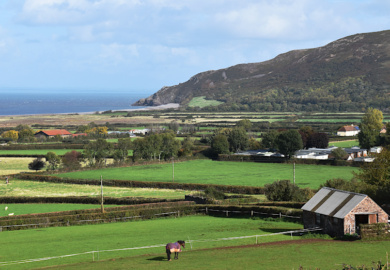There are many websites listing the different types of hikers found on walking trails. Who these hikers are can change depending on where we’re talking about. Having created walking holidays across Europe, we’ve noted different patterns in various countries. For example, In Spain there are far more younger hikers than we’d meet on paths in the UK. But for this I’m concentrating on hiking in Britain where I’ve decided there are fundamentally two different types of hikers. Identifying which is which can be achieved by asking just one question.
Recently, while walking the length of Offa’s Dyke, criss-crossing the English/Welsh border, I pondered why we connected automatically with some walkers and not with others.
Occasionally, it seemed down to nationality. We instantly felt more at ease with Antipodean, North American, and mainland European walkers than some of the British walkers whose paths we crossed. I think that’s partly because other nationalities can be less reserved; they open up more easily.
But then, there were plenty of British walkers who immediately felt like friends, to the extent that we’d join some at the end of a stretch for meals or drinks.
I noticed there were others who made their own alliances, making me ponder what drew people to each other. Why, at breakfast, would some reluctantly mutter ‘morning’ to us and those in our ‘tribe’ while greeting others more enthusiastically? Listening into conversations (aka eavesdropping) provided some clues. While we spoke of many topics, their conversations were decidedly walking orientated. But that wasn’t what separated us. We also discussed the trail, experiences, gear etc. Just not exclusively so.
I’ve long felt the perception of walkers in the UK has been quite stuffy, even boring – all bobble hats and unattractive hiking gear – something that’s acted as a deterrent for younger walkers. It’s an image that put me off when I was younger, and which manoeuvred me toward self-guided hiking rather than in groups.
When we started writing walking directions for Tenerife, we basically wrote them for ourselves, and like-minded people. The walking directions we’d tried didn’t work for us; they didn’t tend to include the things we were interested in. So, we decided to write our own. That decision led to over a decade of compiling hiking guides for destinations around Europe.
Returning to Britain in 2021, I sort of forgot this approach. Even once we got to know our surroundings to the extent we felt confident enough to launch this website, our policy of writing directions for ourselves and those with similar tastes was left in the shadows, until we walked Offa’s Dyke.
The company we used armed us with Cicerone’s Offa’s Dyke Path guidebook and map. The concise booklet containing the maps of the route was invaluable. The guidebook itself reminded us why we got into the business of writing directions in the first place. After the first couple of days, it was rarely consulted. And when we did use it, it mostly didn’t have the information we hoped for. It simply wasn’t written for our type of hiker.
However, the real ‘road to Damascus’ moment relating to spotting difference between categories of hikers happened in Llangollen.
At the end of a long stretch, we rolled up at our accommodation where we were met by the hospitable owners. It was then I realised the question they posed was key in identifying which camp of UK hiker people fell into. It was this:
‘Would you like a cup of tea?’
After walking for 27km and ascending 855m, would I like a cup of tea?
No, I would not. I’d like a refreshing pint of cool ale, that’s what my body craves.
And that’s it, that’s what illustrates the difference. For me, walking should be fun. Challenging, yes. Sometimes even an endurance. And overall, enjoyable and immensely satisfying. But I want a reward for all my hard work, and a cup of tea does not cut that mustard.
Toasting the trail with a cool beer at the end of a day’s walking is the hiking tribe I’m a member of.




